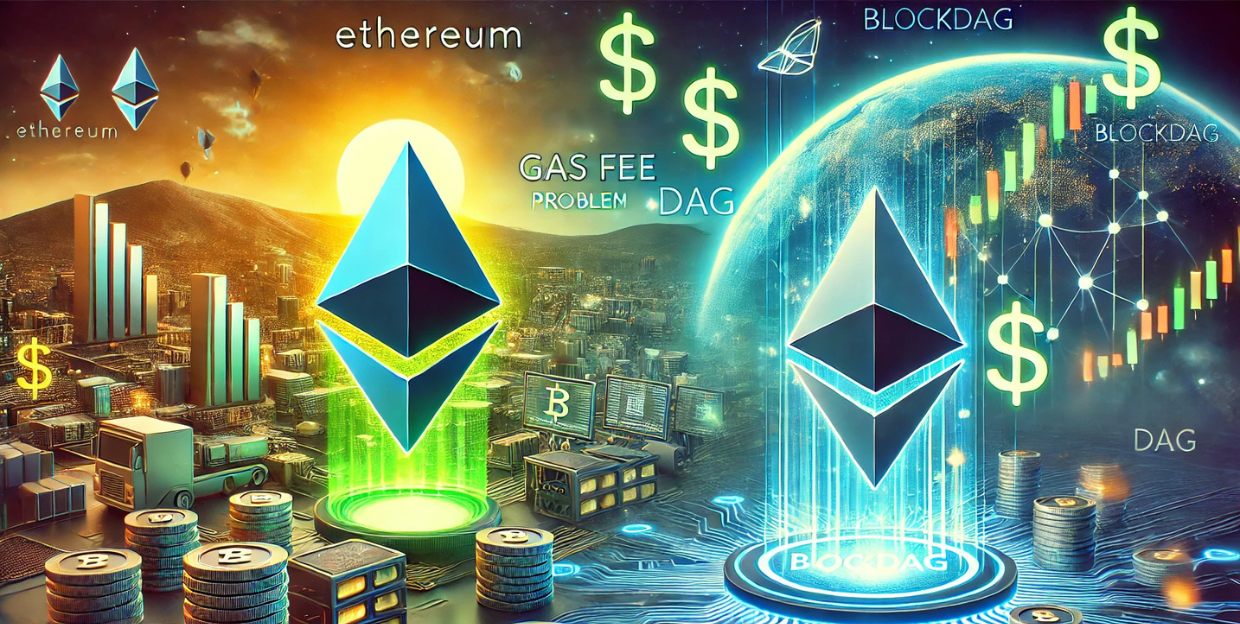
Ethereum has revolutionized the blockchain landscape with its introduction of smart contracts, but it has also been plagued by high transaction fees. Every time users move funds or interact with decentralized applications (dApps) on Ethereum, they face substantial costs. This has led many developers and users to seek more affordable alternatives. BlockDAG, with its innovative Directed Acyclic Graph (DAG) technology, offers a compelling solution to Ethereum’s gas fee problem without sacrificing its flexibility.
EVM Compatibility: Seamless Migration for Ethereum dApps
One of BlockDAG’s standout features is its compatibility with the Ethereum Virtual Machine (EVM). This means that Ethereum apps can easily migrate to BlockDAG without requiring significant code changes. Developers can reuse their existing codebases, programming languages like Solidity, and familiar development tools, making the transition smooth and efficient.
Will BlockDAG Outshine Solana and Cardano in 2025?
This compatibility removes a major barrier for developers who want to switch from Ethereum but are deterred by the need to rebuild their entire dApp infrastructure. By providing a straightforward migration path, BlockDAG becomes an attractive option for developers already familiar with Ethereum’s tools.
Lower Transaction Fees: Attracting Users and Developers
BlockDAG’s architecture significantly reduces transaction costs compared to Ethereum. Unlike Ethereum’s sequential block processing, BlockDAG handles multiple transactions in parallel, eliminating congestion effects that drive up fees on Ethereum. This parallel approach makes activities like trading NFTs, swapping tokens, or interacting with decentralized finance (DeFi) protocols more affordable, even during periods of high network usage.
Lower transaction fees encourage the adoption of dApps within BlockDAG, enhancing network activity and user engagement. Users who were previously discouraged by Ethereum’s expensive transactions can now comfortably interact with dApps, providing a substantial user base ready to adopt BlockDAG’s ecosystem.
Why Developers Choose BlockDAG
BlockDAG offers more than just low fees and EVM compatibility. Its hybrid DAG-PoW model significantly enhances scalability, a major advantage over Ethereum’s current design. While Ethereum struggles with congestion and limited scalability, BlockDAG can handle thousands of transactions per second, ensuring faster confirmation times and less downtime.
This setup is particularly beneficial for real-time applications like games, DeFi, and NFT marketplaces, where smooth user experiences are crucial. The combination of lower costs, easy migration, and high scalability motivates Ethereum developers to choose BlockDAG, leading to a steady shift towards its network.
BlockDAG’s Presale Success and Future Prospects
BlockDAG’s presale has been highly successful, surpassing $201 million with over 18.7 billion BDAG coins sold by Batch 27 at a price of $0.0248 per coin. Early buyers have seen significant returns, with a return on investment (ROI) exceeding 2,300%. This success underscores the high confidence users have in BlockDAG’s potential as an affordable and scalable alternative to Ethereum.

The presale’s popularity is driven by BlockDAG’s robust development roadmap and strategic partnerships, such as collaborations with Inter Milan football club and SpaceDev, a respected blockchain consulting firm. These alliances boost BlockDAG’s visibility and expand its global reach, attracting fresh users eager to leverage its growing ecosystem.
Future Potential of Ethereum dApps on BlockDAG
As more Ethereum developers migrate their dApps to BlockDAG, users benefit from affordable and fast blockchain interactions. Ethereum-based games, financial services, NFT platforms, and other decentralized apps find a comfortable new home, unburdened by high transaction fees or slow network speeds.
For instance, NFT creators can mint and trade more NFTs with significantly lower costs, and DeFi services become practical even for small transactions, expanding blockchain finance to a wider audience. This growing dApp migration naturally increases network activity, further encouraging developers and users to explore BlockDAG.
As more projects settle on BlockDAG, it could soon become a thriving blockchain ecosystem rivaling Ethereum in usage while maintaining affordable transaction costs. This shift positions BlockDAG as a key player in the blockchain space, offering a scalable and cost-effective solution for developers and users alike.
Conclusion
BlockDAG’s innovative DAG technology offers a compelling solution to Ethereum’s gas fee problem, providing EVM compatibility, lower transaction fees, and enhanced scalability. As developers and users increasingly adopt BlockDAG, it is poised to become a major force in the blockchain ecosystem, offering a more affordable and efficient alternative to Ethereum. With its successful presale and strategic partnerships, BlockDAG is well-positioned for future growth and adoption.

